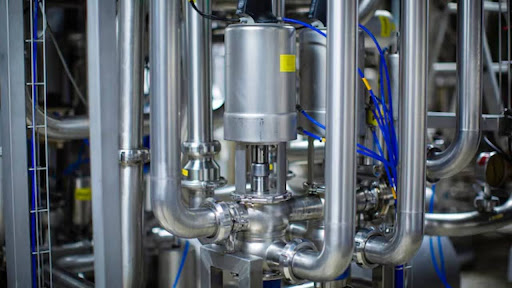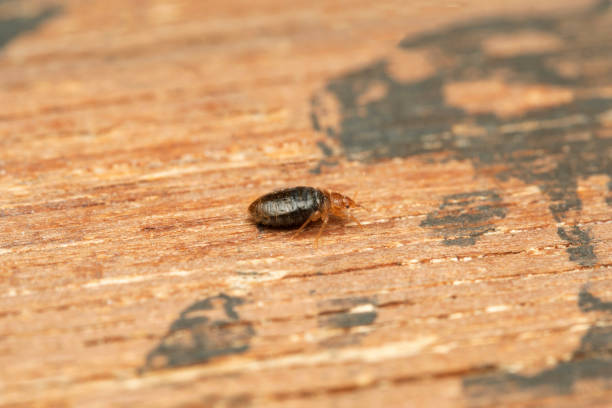Food and beverage processing is a complex industry, demanding high precision and safety. A fundamental part of this process involves accurately controlling and regulating fluid flow. This is where a ball valve stainless steel comes into play. These valves ensure efficiency and safety in food and beverage processing systems.
From 1-piece to 3-piece ball valves, every valve has some role in industrial applications. Here, we’ll examine the role ball valves play in the food and beverage industry.
Let’s get to it right away!
Overview of Ball Valve Stainless Steel
A ball valve is a valve that opens and closes by rotating. It has a ball inside that can block or let liquid flow. The ball turns one-quarter to open or close. It’s a valuable valve that controls fluid flow. The valve position shows if it’s open or closed. When the handle lines up with the fluid path, it’s open, and when turned 90 degrees, it stops the flow. A key benefit is that it is easy to see if the valve is open or closed.
Functionality and Unique Properties
The primary function of a ball valve stainless steel is to control the flow of liquids, gases, or slurries within a pipeline. These valves are known for their excellent shut-off capabilities, making them ideal for applications that require precise flow control. They can handle a wide range of temperatures and pressures, making them suitable for various food and beverage processing applications.
Staining steel’s durability and corrosion resistance make it the preferred material choice for these valves. Its inert nature ensures that it does not react with the food or beverage products it comes into contact with or the cleaning substances used in the process. Hence, it does not affect the quality or safety of the products.
Sub-categories of Ball Valves
The function and design of ball valves can vary depending on their specific use within the food and beverage industry. Here are the main types:
One-Piece Ball Valves
These are low-cost valves with a ‘throw-away’ design. They feature no leakage points, making them a reliable, albeit less durable, choice.
Two-Piece Ball Valves
These are the most famous varieties of ball valves. They have a joint with little to no risk of leakage and are easy to maintain periodically.
Three-Piece Ball Valves
These types of ball valves are designed for easy maintenance. They can be disassembled, and their internal parts can be replaced, making them a long-lasting choice.
The Role of Ball Valve Stainless Steel in the Food and Beverage Industry
In the food and beverage industry, ball valves are used extensively to control the flow of various ingredients and products during processing, packaging, storage, and transportation. They are divided into two primary categories:
Direct Contact Ball Valves
Direct-contact ball valves come into direct contact with food or beverage products. They must adhere to strict hygienic standards to avoid contamination. Due to their direct contact with the product, these valves undergo stringent checks to ensure the highest level of safety.
Utility Service Ball Valves
These valves do not directly contact food and beverage products. Instead, they control the supply of essential utilities such as water and steam used in the preparation, packaging, or transportation processes. Although they do not directly contact the product, these valves must still comply with hygienic standards.
Sanitary Ball Valves
Sanitary ball valves, a subset of direct contact ball valves, are specifically designed for applications that demand sterile or clean processing. They must not have any cavities or crevices where bacteria could potentially grow. The surfaces that come into contact with the product (wetted surfaces) must be polished, and their radii must be of a minimum size to avoid any clinging or entrapment of particles.
Critical Considerations for Ball Valve Selection in the Food and Beverage Industry
Selecting the correct type of ball valve for a food and beverage application requires careful consideration of various factors. These include:
Material Compatibility
The material used in constructing the valve must be compatible with the food or beverage product it will come into contact with. Stainless steel is popular due to its corrosion resistance and compatibility with various substances.
Valve Type
Different types of ball valves serve different purposes. For instance, globe valves offer precise control, while butterfly valves are suitable for large flow applications.
Sanitary Design
The valve should be designed to meet the food and beverage industry’s strict hygiene and sanitation requirements.
Temperature and Pressure Ratings
The valve should be able to withstand the temperature and pressure ranges encountered in specific food and beverage applications.
Flow Characteristics
Different types of valves have different flow characteristics. Selecting a valve with a flow characteristic suitable for the specific application is essential.
Maintenance and Support
The valve should be easy to maintain and clean. Moreover, choosing a valve from a reputable manufacturer that offers comprehensive support and maintenance services is preferable.
Conclusion
Ball valve stainless steel is pivotal in the food and beverage industry. Its ability to control and regulate the flow of ingredients and products ensures efficient and safe processing. When selecting a ball valve for your food and beverage processing needs, it’s crucial to consider factors such as material, valve type, sanitary design, temperature and pressure ratings, and flow characteristics. In doing so, you can ensure that your processing system operates smoothly, efficiently, and safely.




